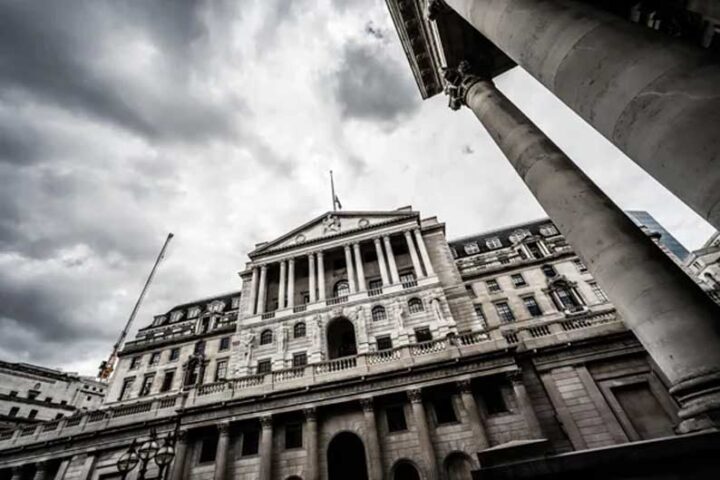By Mark Haefele
The Federal Open Market Committee (FOMC) voted unanimously to keep rates unchanged on Wednesday in a target range of 5.25% to 5.5%. The pause was widely expected and marked the fourth consecutive time the Fed paused since starting its 525 basis-point hike cycle in March 2022.
The FOMC statement was changed to remove the tightening bias since the risks to achieving its employment and inflation goals are moving into better balance. Fed Chair Jerome Powell added that “rates have likely met a peak” and opened the door to rate cuts.
But equities fell and expectations for a first cut in March were reduced after the FOMC said that rates would not be cut until it had gained greater confidence that inflation is moving sustainably toward its 2-percent target.
At the press conference, Powell said that a March cut was “unlikely.” The S&P 500 declined 1.6% on the day to 4846, 85 points away from its all-time high. The yield on the 10-year US Treasury dropped 13 basis points to 3.92%.
We believe the market is still too optimistic about the timing and pace of easing, with around 145 basis points of cuts still priced in for 2024 and a 33% probability that the cuts will begin in March.
Our base case remains that the Fed will reduce rates by 100 basis points in 2024, beginning in May, depending on the data. To keep the Fed on track for 100 basis points of cuts or more, economic data needs to cool further, in our view.
Inflation is slowing
Core PCE data has cooled from the peak and the six months of core PCE data is close to the Fed’s 2% inflation goal. Yet the Fed does not appear to desire starting any easing without further confidence that inflation is on a sustainable path toward 2%, over time.
An update to the FOMC’s Summary of Economic Projections will be made at the March meeting, with Fed Chair Powell noting that the inflation forecasts are likely to be lower than what was presented in December.
Still-strong US labour market
Tuesday’s Job Opening and Labour Turnover Survey (JOLTS) pointed to continued strength in labour demand, with stable job openings per unemployed person and quit rates.
Yet, Wednesday’s Employment Cost Index (ECI) showed that the growth of hourly labour costs has cooled from the 2021 peak, at a greater pace than economists had expected.
The ECI report is the Fed’s most-watched data series for changes in employment costs.
By the end of 4Q23, wages and salaries for private industry workers rose by the slowest pace since 2020 and edged closer to the average between 2010 and before the start of the pandemic.
While the data shows that employment costs are heading closer to levels compatible with the Fed’s 2% target for inflation over time, wage growth remains elevated. As a result, wages have not cooled and the labour market has not softened enough to provide the FOMC with comfort to begin cutting its policy rate.
The next datapoint on the labour market will be the release of the official employment data on Friday for the month of January.
Thus far, labour supply and demand appear to be in better balance.
4Q growth topped expectations
As inflation eased and the jobs market remained strong, consumer spending was resilient.
Overall, “economic activity has been expanding at a solid pace”, according to Fed Chair Powell. In the US, the 3.3% quarter-over-quarter increase in fourth quarter GDP was far above consensus expectations, marking the sixth straight quarter of growth exceeding the Fed’s estimate for the sustainable trend rate of 1.8%.
For 2023 as a whole, the economy expanded 2.5%. The continued strength in the economic activity and anticipation of lower interest rates ahead led US consumer confidence to jump to a two-year high of 114.8 in January.
The Conference Board’s gauge of sentiment marked the third straight monthly increase, suggesting momentum in household spending is likely to endure.
So, with the Fed holding rates higher for a bit longer, and with the US economy on course for a soft landing, our CIO investment outlook remains unchanged after the FOMC meeting.
We continue to advise investors to brace for further volatility ahead given potential macroeconomic uncertainties. We still believe that the US economy should slow this year with falling inflation, presenting a positive backdrop for quality bonds and equities.
For investors looking to capture more stock upside in a Goldilocks scenario of robust growth, falling inflation, and pre-emptive Fed cuts, we like US and European small-caps, Swiss mid-caps, and emerging market equities.
Mark Haefele is Chief Investment Officer at Global Wealth Management, UBS AG
UBS Chief Investment Office’s investment views are prepared and published by the Global Wealth Management business of UBS Switzerland AG (regulated by FINMA in Switzerland) or its affiliates, part of UBS Group AG. UBS Group includes Credit Suisse AG, its subsidiaries, branches and affiliates. The investment views have been prepared in accordance with legal requirements designed to promote the independence of investment research.










